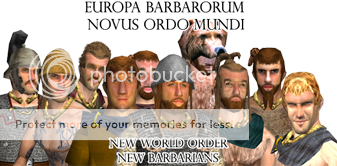Ancient Mediterranean dwellers could reach Americas. It was possible for their ships. Why it was possible? Mr. Hyeyrdal sailed to Americas from Africa on the papyrus Egyptian boat. If it was possible for Egyptian papyrus boat, it was possible for other more developed and quality ancient vessels. Anyway they could still use papyrus boats.
Nero time Romans build huge vessels with the water displacement 1200 tons (Spanish Galleons usually had 500 tons). Caligula had to bring obelisk from Egypt and used vessel with 1300 tons water displacement. Usually ships had lead and bronze coverage below waterline. Roman grain cargos were bigger then 19 century Frigates, and might deliver 1200 tons of grain at once. Average trade ship had 340 tons of different goods. In 64 AD Joseph Flavius sailed from Alexandria to Rome on the board that placed 600 passengers. Lucian described Roman grain ship, which was brought to the shore after the storm. It had 54 meters long and 13 meters height (without mast)
The key aspects of transatlantic voyages are winds and currents. Strong currents from West Africa goes to Mexican bay. Powerful Canary and North Equatorial Current with strong northeasterly trade winds help the sailors. If Romans sailed to Canary Islands, there is no surprise they could use that currents and winds to sail to Americas.
The indirect evidence:
Indian Corn on the Ocrilum (sp? Very sorry for spelling, it is my own translit from Cyrillic) baths near Rome (now in Hermitage)
picture
Next. Herculanum and Pompey wall paintings with pineapples, annona and lemons! Pineapple came from Brazil.
Italian Casella and Russian Vavilov wrought about it.
(Casella D. La frutta nelle pinture Fompeiane // Pompeiane: racolta di scavii di Pompei. — Naples, 1950. — P. 355—386.)
How the fruits and vegetables from New World came to the patrician dinner in 1st AD?
In 1964 AD on Azor Islands were found roman pots dated 2-3 centuries AD.
In 1933 in Aztec tomb dated 13-15 centuries AD was found head of Roman sculpture dated 2 century AD. (Garcia Payon J. Una cabecita de barro, de extraña fisionomia // Boletin del Instituto Nacional de Antropologia e Historia. — México, 1961. — № 6. — P. 1—2.)
Hellen statues, Roman terracotta Venus (Romans in the Americas // Katunob. — Vol. П. — № 2. — Carbondale, Illinois, 1961. — P. 12; Gaddis V. H. American Indian Myths and Mysteries. — Pennsylvania, 1977. — P. 102.)
Venezuela – roman coins dated 4 century AD. (Romans in the Americas // Katunob. — Vol. П. — № 2. — Carbondale, Illinois, 1961. — P. 12; Gaddis V. H. American Indian Myths and Mysteries. — Pennsylvania, 1977. — P. 102.)
Ancient sailors







 Reply With Quote
Reply With Quote
Bookmarks